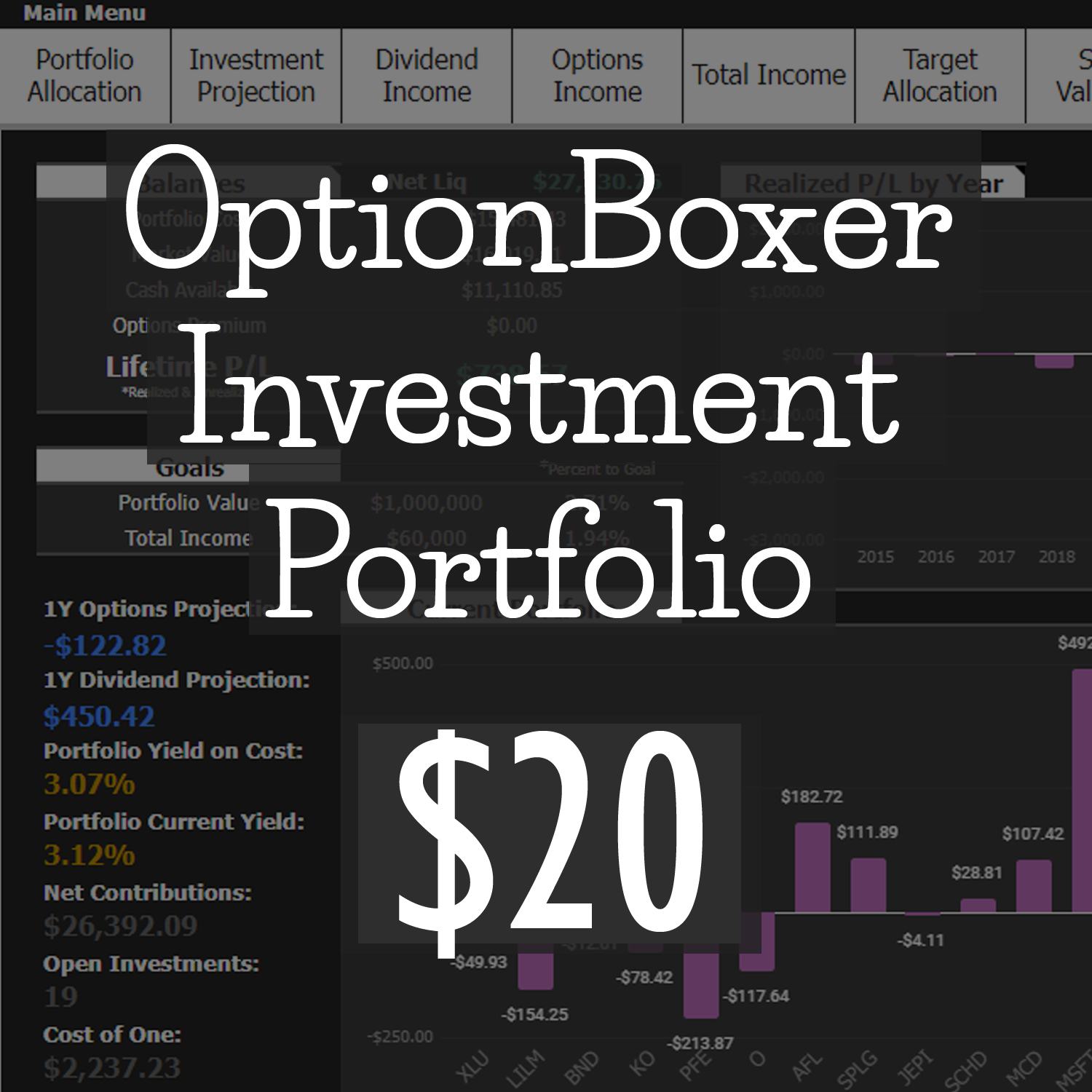With Exchange Traded Funds taking over the stock market I think it’s well past time to consider an alternative approach to options trading. Many professional options traders use a myriad of options positions to capitalize on any underlying movement. However, what if we could do something similar without taking on any more risk than a $5 wide debit spread. Would that be possible? Would the potential return even be worth the time?
Well, in today’s post, that’s exactly what we’re going to discuss. A new way to construct our trades that gives us the ability to profit wildly during bull markets and not lose during bear markets. That’s right, NOT lose, even when we’re dead wrong! Seems a little too good to be true but stay with me here and I’ll explain exactly what I mean.
Before we walk through this radical new approach to options trading. Be sure you’re familiar with the following types of spreads;
Additionally, here are some short guides from Wall Street Mojo on debit spreads and credit spreads as well. Finally, for those wishing to generate the absolute largest possible returns be sure to brush up on simple Long Calls and Long Puts. Using these foundational options strategies will give us the ability to construct the worlds first Options ETF.
Intrigued? Let’s get into it!

What is the Options ETF?
An options ETF is similar in nature to an ETF only using options trades. For example, consider SPY, everyone’s favorite exchange traded fund. If I were to invest in SPY and buy 1 share, I’m actually buying a small piece of over 500 companies. Immediately, I’m well diversified and I’m automatically guaranteed to at least generate the “market return”. General consensus is the market returns, on average, about 7-10% per year. Some years more and some years less.
Now, I’m not suggesting we construct 500+ different options positions. You certainly could if you wanted too, and had the capital. No, I’m proposing we utilize the same underlying thought process. Only instead of building a basket of stocks, we construct our basket using options positions.
For example, suppose we were bullish on the following underlying stocks;
- Apple – AAPL
- Microsoft – MSFT
- Home Depot – HD
- McDonalds – MCD
- Coca-Cola – KO
Sure we could simply buy 1 share of each company and create our own mini-ETF but that isn’t going to give us much leverage for large returns. We trade options, so we expect the larger return for taking a similar risk. Otherwise, trading options is useless and no one should do it.
Hypothetical Example
In any case, using the 5 companies above, we first need to consider how much capital we have to commit to our new options ETF. For this example, let’s assume we want to keep risk low and don’t want to take on more risk than a $5 wide spread.
To do so, we’ll have to utilize debit and credit spreads to construct our ETF. Here’s an hypothetical example options ETF using the companies above.
- Apple debit spread – $70
- Microsoft debit spread – $85
- Home Depot debit spread – $75
- McDonald’s debit spread – $90
- Coca-Cola debit spread – $87
- Total Cost – $407
There it is. For only $407 we’ve created our very first basket of stocks, using only options spreads. Should any of these assets, or all of them, move higher in price we’ll be handsomely rewarded. Moreover, by spreading our risk across several different instruments we could avoid a loss if only a couple of our assets improve in price.
Seems interesting but we still take on $407 of risk and there is no guarantee we won’t lose money, after all, options decay in value over time. Right, so can we make it better?
Overcoming Options Time Decay
To combat potential time decay, the thought process is relatively simple. Allow for more time by moving to further dated options or construct our options ETF using a combination of debit and credit spreads. In reality, it would take little more than opening half credit spreads and half debit spreads. However, I’m thinking we add another position to our hypothetical basket of options trades. Yes, if you’re thinking what I’m thinking, let’s hedge this entire basket with a credit spread.
To do that, we again have some options, we could easily open a countering spread on each of the 5 assets above. Effectively, lowering our net outlay. Or, we could open a position against the entire market by creating a spread against, that’s right, an actual ETF. In either position, we can effectively hedge the entire options ETF and keep our risk virtually the same.
However, doing this doesn’t come without a drawback. We’ll be giving up some amount of potential upside should our basket of stocks rise in price. Although, doing so protects us should the market turn lower or remain flat. So, as is the nature of options, there’s always a trade off.
For this example, I’ve opened an SPY credit spread for a credit of $409. Effectively neutralizing our entire cost while still retaining a bullish overall sentiment. Albeit, less of one.
Playing this Hypothetical Options ETF using OnDemand in ThinkorSwim
I’ve constructed the above example using ThinkorSwim’s OnDemand feature with a start date of February 18, 2022. You may recall, 2022 wasn’t the most favorable of market environments. Let’s see how this options ETF may have performed at various periods. Oh, and I constructed each spread using 336 DTE with the exception being SPY, where I opted to use only 147 DTE. The thought was to potentially speed up the decay of that spread. We’ll see how that works out.
| Time in Trade | % Return | $ Return |
| 1 Week | (7.62%) | ($60.50) |
| 2 Weeks | (6.83%) | ($54.00) |
| 3 Weeks | (5.37%) | ($42.00) |
| 1 Month | (16.59%) | ($134.00) |
| 3 Months | 15.24% | $125.00 |
| 6 Months | 28.72% | $235.50 |
| 9 Months | 3.90% | $32.00 |
| 10 Months | (.61%) | ($5.00) |
Example Thoughts
As you’ll notice, with no management, I was able to achieve almost a 30% return at the 6 month mark. Truthfully, this return was closer to 50% when measured against the risk. Yes, a nearly 50% return in just a few months with little more than a debit spread worth of risk.
For this example, and the bear market that was 2022, our hedged credit spread on SPY actually did the majority of the lifting by going to a 100% profit and expiring worthless. Additionally, once that happened I didn’t open another credit spread to keep the hedge. I simply let the other 5 trades finish worthless. Not great, I’ll admit but to return nearly 50% in the face of the most bearish market we’ve seen since 2008 is more than a little interesting.
Now, If you’re anything like me, then I’m sure your head is spinning with the possibilities that exist from trading options this way. The freedom we have here to construct or even deconstruct our ETF is potentially endless. In fact, let’s consider some of the ways this position could be managed.
Options ETF Options
By building our own options ETF’s we have the ability to manage it in any number of ways. For instance, we could simply close the entire basket at a defined level. We could close individual holdings as they become profitable or more importantly, as they drag down the return by underperforming. We could do so many things, maybe opt to leave a runner position or even add or subtract assets from our ETF. The possibilities are nearly endless.
As you can see, by becoming our own ETF manager, we aren’t bound to whatever assets our ETF holds. We can hold more or less any time. Maybe we’re patient or maybe we manage the ETF daily. We aren’t stuck waiting for the market to “come back” for us to realize a profit. In fact, adopting that mindset may be counterintuitive given the nature of options.
As such, I think some level of management is actually a welcome relief to just holding several underperformers. We truly have all the cards in our hands and there isn’t any limit to how large or how small our options ETF should be.
Closing Thoughts
Sure, approaching options trading this way may not be for everyone. But for those, like me, who’ve been trading options for many years without finding much consistency I feel this creates an entirely new playing field. By no longer looking at just one options position in a vacuum I’m able to create a more complete position. Designed to capitalize on every possible angle, bull market, bear market, delta, volatility, theta, etc. it’s all accounted for by trading this way.
Admittedly, most would simply view this as a portfolio of trades and manage each individually. However, doing that is no different than what I’ve been doing and almost always results in an overall loss. For instance, assume I closed each trade at 50% for this example. I think that’s a fair management technique. Had I done so, the overall position would have become a loss during the period because I’d have removed the hedge way to soon. By adopting a more holistic approach, I’m able to avoid “over management”. A concept that is not discussed nearly enough by options traders but we’ll table that conversation for another day.
In any case, perspective here is important and developing a winning mix of management criteria will be critical. That said, one thing is clear for me. I won’t be implementing a single options trade again. That approach just simply doesn’t work.
God bless,
Jeff
*This post is NOT a recommendation to buy, sell, or trade any security. The information provided within is strictly for entertainment. Traders or investors should always consult a registered financial professional prior to trading or investing.








